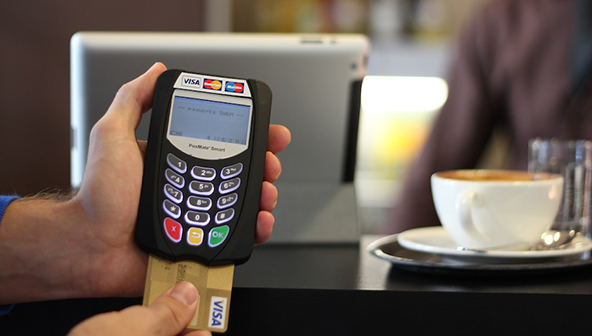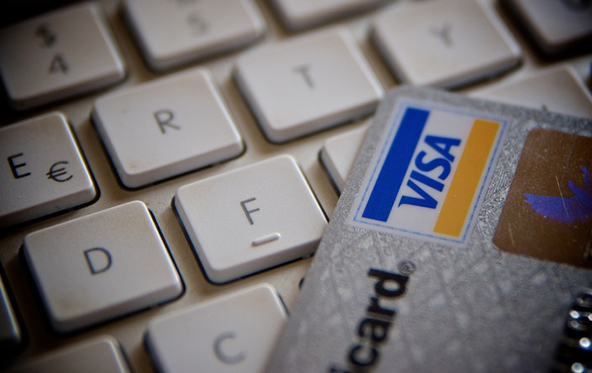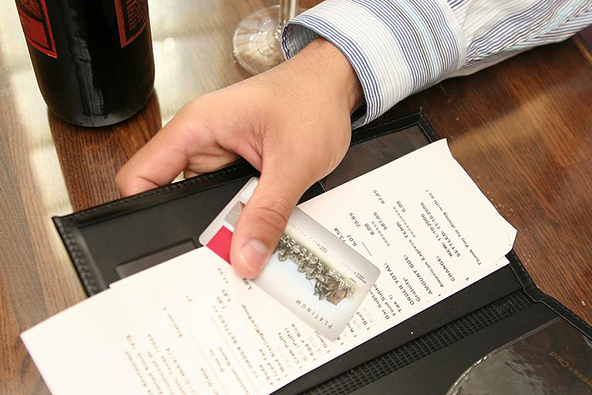How New Chip Cards Cure Americans’ Headaches at European Checkouts

Slowly but surely the EMV (also known as chip-and-PIN) credit card technology is coming to the U.S. JPMorgan Chase has just rolled out its third such product, co-branded with British Airways and designed specifically for Americans traveling abroad who’ve long had issues getting their magnetic stripe cards accepted outside the U.S.
All three of Chase’s chip cards are actually hybrids – they also feature a magnetic stripe, which makes them acceptable in the U.S. where the vast majority of pint-of-sale (POS) terminals do not at present support the chip-and-PIN technology. That, however, is about to change, fast.
The Chase / BA Card and the Issue with EMV
The new Chase / BA card will surely appeal to globe-trotting Americans, whose European credit card acceptance travails have been well documented, including on this blog. The issues began in the early 2000s when the EMV technology first made its appearance in the U.K. and then quickly displaced the older and less secure mag-stripe cards across Western Europe.
The problem was that cards issued by U.S. banks still relied exclusively on the magnetic stripe. They could still be accepted through EMV terminals if fallback procedures were followed, but in real life most European merchants either did not know how to do that or simply didn’t want to.
As a result, many Americans found themselves unable to use their cards in Europe. In 2008 alone, U.S. issuers lost $447 million in revenues, because 9.7 million Americans could not use their cards abroad, according to a report from Aite Group, a research and advisory firm. Moreover, U.S. issuers were missing out on a huge cost-cutting opportunity in the form of lower fraud losses. Their U.K. peers were enjoying a decline in in-store credit card fraud from ?ú218.8 million ($342.3 million) in 2004 to ?ú98.5 million ($154.1 million) in 2008, according to data from the U.K. Payments Administration.
Why then, you may ask, haven’t U.S. banks taken steps to resolve the issue and save themselves well over half a billion dollars a year in the process? Well, it turns out that the wholesale switch to EMV would have cost issuers a lot more, close to $3 billion, according to one estimate by the Mercator Advisory Group, a consultancy. Apparently the banks thought that was a bit too much and just kept swallowing their losses. All that changed, however, with the arrival of yet another payment technology – near-field communication or NFC.
Visa: All U.S. Processors Must Support Chip Transactions by April 2013
NFC is the technology behind Google Wallet, Isis and many other new mobile payments services that many studies predict are about to take the world by storm in the coming years. It allows payments to be made by waving chip-containing phones by NFC-enabled POS terminals, which communicate wirelessly between each other to complete a transaction.
As Google and most of its rivals, as well as all big U.S. telecommunications companies, began developing their NFC platforms, which clearly were encroaching in Visa’s territory, the credit card giant decided to step into the fray and mandate that all of its processing banks “support merchant acceptance of chip transactions no later than April 1, 2013.” In case you somehow misunderstood what that meant, Visa spelled it out for you:
The adoption of dual-interface chip technology will help prepare the U.S. payment infrastructure for the arrival of NFC-based mobile payments by building the necessary infrastructure to accept and process chip transactions that support either a signature or PIN at the point of sale.
It is clear that Visa is hoping to lay down an NFC standard, so that all POS terminals can communicate with chips containing Visa card information, regardless of whether the customer uses Google Wallet, Isis or any one of the many other platforms that are soon going to be in use.
The Takeaway
Visa’s sudden NFC push is actually good for consumers and, in a case of a benign side effect, it is also helping to cure Americans’ card-induced headaches in Europe. Of course, in time EMV cards will displace mag-stripe ones altogether, but that day is still some way off.
The Chase / BA card comes with another feature that is sure to be greatly appreciated by its users. It charges no foreign transaction fees, unlike all older Chase cards, mine very much included, which cost you additional three percent of the sale’s amount when you use them abroad. I hope other banks will now take a page of Chase’s book.
Image credit: Payworksmobile.com.

